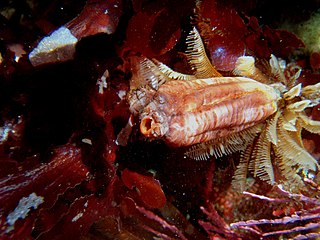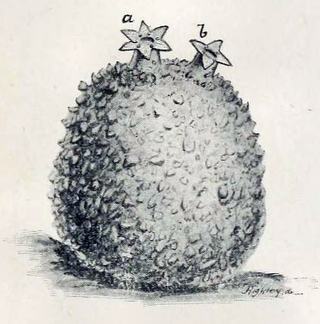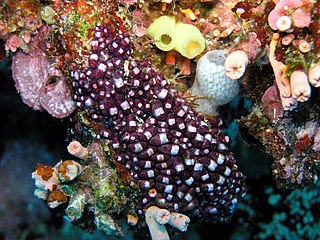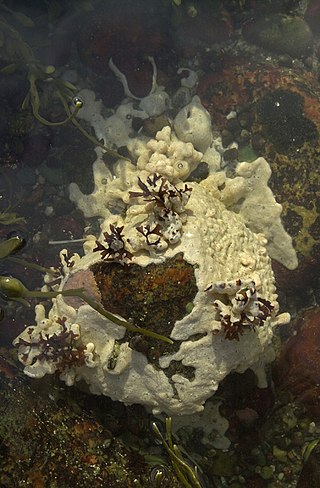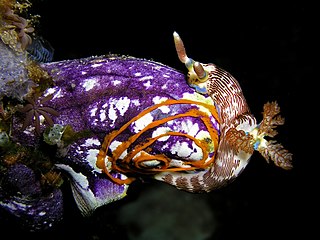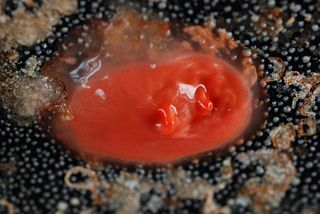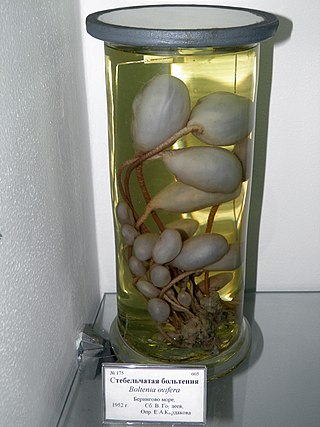| Gynandrocarpa | |
|---|---|
| Scientific classification | |
| Domain: | Eukaryota |
| Kingdom: | Animalia |
| Phylum: | Chordata |
| Subphylum: | Tunicata |
| Class: | Ascidiacea |
| Order: | Stolidobranchia |
| Family: | Styelidae |
| Genus: | Gynandrocarpa Michaelsen, 1900 |
| Species: | G. placenta |
| Binomial name | |
| Gynandrocarpa placenta (Herdman, 1886) | |
Gynandrocarpa is a genus of ascidian tunicates in the family Styelidae.
Species within the genus Gynandrocarpa include: [1]
- Gynandrocarpa placenta(Herdman, 1886)
Species names currently considered to be synonyms:
- Gynandrocarpa borealis(Gottschaldt, 1894): synonym of Kukenthalia borealis (Gottschaldt, 1894)
- Gynandrocarpa domunculaMichaelsen, 1904: synonym of Polyandrocarpa placenta (Herdman, 1886)
- Gynandrocarpa imthurniHerdman, 1906: synonym of Eusynstyela latericius (Sluiter, 1904)
- Gynandrocarpa latericiusSluiter, 1904: synonym of Eusynstyela latericius (Sluiter, 1904)
- Gynandrocarpa maximaSluiter, 1904: synonym of Polycarpa anguinea (Sluiter, 1898)
- Gynandrocarpa michaelseni(Sluiter, 1900): synonym of Chorizocarpa michaelseni (Sluiter, 1900)
- Gynandrocarpa misanthroposMonniot, 1978: synonym of Dextrocarpa misanthropos Monniot, 1978
- Gynandrocarpa nigricans(Heller, 1878): synonym of Polycarpa nigricans Heller, 1878
- Gynandrocarpa purpureaSluiter, 1904: synonym of Chorizocarpa sydneyensis (Herdman, 1891)
- Gynandrocarpa quadricornulisSluiter, 1904: synonym of Symplegma brakenhielmi (Michaelsen, 1904)
- Gynandrocarpa similisSluiter, 1904: synonym of Symplegma brakenhielmi (Michaelsen, 1904)
- Gynandrocarpa solitarisMillar, 1955: synonym of Dextrocarpa solitaris Millar, 1955
- Gynandrocarpa systematicaSluiter, 1904: synonym of Chorizocarpa sydneyensis (Herdman, 1891)
- Gynandrocarpa unilateralisMichaelsen, 1900: synonym of Gynandrocarpa placenta (Herdman, 1886)



